Games
Capcom’s CPS Changer

The nineties were a time of weird and wonderful experimentation in Japan. Flush with bubble-era cash and without a clear idea what to do with it, a lot of companies tried a lot of ambitious things. Minidisc, X68000, Skyline GT-R. Not to be left out, Capcom released a weird device that looked a lot like a video game console. It was, in essence, a neat little adaptor designed to play Capcom’s arcade games at home. Named after the Capcom Power System arcade platform, from which it drew all but one of the games in its library, it was only available via mail order direct from Capcom.
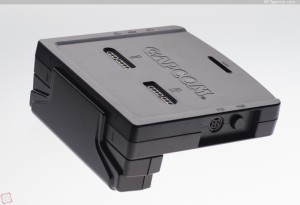
The Changer itself is a tiny thing, similar in size to the PC Engine. The games are comparatively enormous, and if we considered this a traditional console, these would be the largest game cartridges ever produced. Each game was a full-on arcade board, packaged in a large grey case – the same used in several Capcom arcade releases, with a large black plate upon which the Changer was mounted.
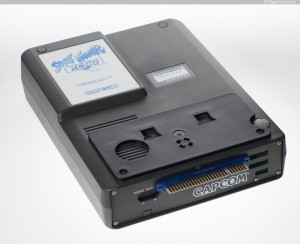
The Games
Only eleven games were produced, far fewer than the thirty nine released for the CPS-1 system in the arcade. Sadly most of the great CPS-1 games were not among the released CPS Changer titles – like Strider, Ghouls ‘n Ghosts, Willow and Mercs.
The prices were high (Y20,000 per game, roughly triple the cost of a SuperNES game) and its life was short: Capcom dropped support one year after release. The first ten games came out in October and December 1994, the last game a year later in 1995. As a kind of goodwill gesture Capcom made the last release a special conversion of Street Fighter Zero, one of the first games released for the newer CPS-2 platform.
The list of released CPS-Changer games is:
| Capcom Quiz World 2 | Muscle Bomber 2 | |
| Captain Commando | Street fighter 2 | |
| Final Fight | Street Fighter 2 Turbo | |
| King of Dragons | Street Fighter Zero | |
| Knights of Round | Tenshi wo Kurau 2 | |
| Muscle Bomber |
Punisher was listed on a Capcom price list, but it was never released.
All of the Changer games have been updated or tweaked with new features, with special configuration menus, cheats and new gameplay features.
Street Fighter Zero is significantly re-worked from the arcade original. The CPS-2 system was bigger, faster, awesomer than the CPS-1 technology used in the Changer, and so some sacrifices were made when the game was brought over. The intro warning screens are slightly different, there’s no QSound splash screen (because QSound required stereo sound and the Changer was mono, and so it was removed), and because of reduced storage size some sounds and animation frames are missing.
Also interesting, the game data in the Changer version of Street Fighter Zero is not encrypted, unlike the CPS-2 arcade version, and this lack of security was crucial to early successes in emulating the CPS-2 platform. The platforms were similar enough that the unencrypted version gave a useful look at what the encrypted version was doing.
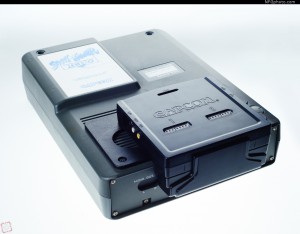

Inside the Changer
The CPS Changer system is unique among game systems as it contains no game logic at all, and connects to what are – for all intents and purposes – arcade PCBs. It is little more than a fancy, tiny SuperGun-like adaptor designed to play arcade games at home. Compare this to the Neo Geo which is like every other game system, with processing logic and interfaces in the system, with only the game data in the cartridge.
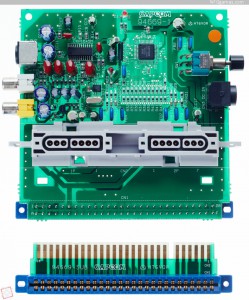
Because it was little more than an adaptor, the CPS Changer contains only a few components. Two Super Nintendo controller ports are the largest element of the board’s construction, and if they look out of place it’s because they are literally ripped from the Super Famicom console. Since arcade games didn’t understand the Super NES controller signalling a custom Capcom microprocessor converted the inputs to discrete signals compatible with the game board attached to it.
For video output, a Sony chroma encoder (a CXA1645) converts the game’s RGB video to a more home-user-friendly s-video or composite signal. There’s no stereo audio, nor is there a volume control, line-level mono sound is all you get.
That’s about it, really. Aside from support components like resistors and capacitors there’s nothing else inside the CPS Changer shell. Power is provided by an external power ‘brick’ similar to a GameCube or TurboGrafx-16.
The audio output isn’t JAMMA spec either, and seems – although this isn’t confirmed – to be already suitable for use with home audio systems, where normally JAMMA games are designed for use with speakers.
Inside the Games
You can use the Changer games in any JAMMA-compatible arcade cabinet, or remove them from the big grey box and forgo the use of the little gender-bending edge connector. Probably Capcom thought an edge connector would be too easily broken if it were permanently attached to the game shells, and so it was removable.
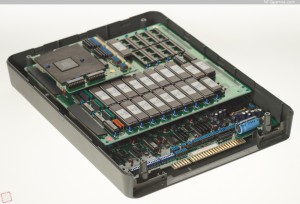
Inside the enormous game shell is a standard JAMMA arcade board, typically two or three stacked PCBs loaded with components and a heap of ROM chips. A vertical interface board is used to connect the male arcade board connector to a female one on the outside, and another short interface PCB connects it to the CPS Changer.
Unlike the CPS-2 there’s no auxiliary connector, though there are spaces for three of them on the interface board. Some of the controller inputs use JAMMA pins normally reserved for other purposes (the JAMMA spec calls for four buttons per player, but Street Fighter uses six).
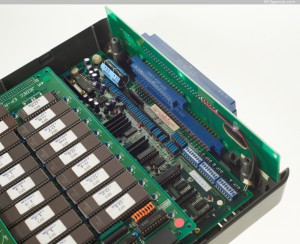
There’s no suicide battery in CPS Changer games. Piracy was a problem in the arcades, and a battery-backed system would kill the game if it was hacked. They would also expire eventually, resulting in dead games only Capcom could repair (at a reasonably steep cost). It would obviously be a bad idea for home users to be thus penalized, and so the battery was removed.
The volume dial on top of the shell is not connected to the volume control on the game board. Because the shells were re-used from Capcom’s arcade operations they just left the dial in, but didn’t connect it to anything. The line-level audio offered by the Changer would not have benefited from users fiddling with the volume.
Technical Bits
Opening a CPS-Changer is easy, though you’ll need a T10T TamperProof (Security) Torx bit to remove the screws. There are only six screws and it’s very easy to dissasemble and reassemble.
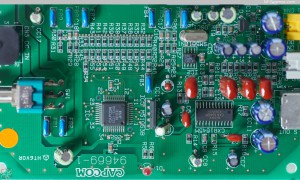
The game itself is another matter! There are seven screws in the interface board, and there are retaining bolts inside which will fall into the system when the screws are removed. There are three plastic covers hiding screws, one on the interface board and two circular ones on top of the system (these are all removed for most of these photos). The interface board screw cover is easily removed with a small screwdriver, and is held in by two small clips. The top two covers are glued in place, and will pop out easily when a screwdriver is used against them. When all the screws are removed, push the sides of the shell’s top half in a little bit to disengage the clasps, and then the two halves will separate.
The CPS Changer can be used as a great home JAMMA playing system, except for two small flaws: The design of the JAMMA connector makes it difficult to connect to many PCBs, and the standard JAMMA audio is not handled well, so another method of connecting the audio is required.
But why?
One thing never explicitly explained is why Capcom released this system at all. Looking at the library, a mix of games was released: Capcom’s best-ever (Street Fighter), solid but not especially excellent (Knights of the Round) and distinctly odd (Quiz Capcom World). Why not the best games that would really move some units? Strider would have been incredibly popular, and Ghouls ‘n Ghosts always had a large fan base.
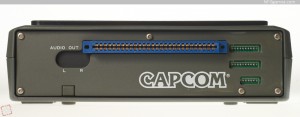
The business end of the re-purposed game shell
has several unused components.
I have two theories.
It was certainly never intended to compete with the Neo Geo. Not at these unprofitable prices – SNK was selling Neo games for 50% more than Changer titles. Perhaps Capcom had unsold inventory, so they whipped up the simplest mechanism to sell them to a new audience. It would have taken little more than an engineer or two to create the Changer hardware, and they used SNES controllers and mono sound to keep the costs down. Printing boxes is cheap, especially if the individual game labels were just stickers. The game shells were already in production, and needed only the plastic plate to mount the Changer.
It’s very possible that the really great games weren’t released because they were still making money in the arcades, and Capcom certainly wasn’t selling the Changer games at an arcade price – arcade operators would typically spend several times more to get their games… So perhaps Capcom realized they simply couldn’t sell the same game to a different market at a third the price, so only older, unpopular titles made it out.
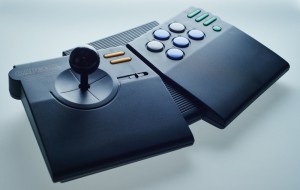
The Capcom CPS Fighter A10CA Joystick. More info
It’s a bit of a stretch – who would create a new system to unload some PCBs? (Japanese Wikipedia suggests it was a ploy to unload the CPS Fighter joysticks but that makes even less sense). But perhaps at the tail end of the bubble era, before the crash really hit home, maybe it made more sense to just fling some money at the situation and see what happened.
My other theory is a little less interesting.
Maybe it was just corporate infighting that saw one team push for its creation and release, and another to later get the upper hand and kill it.
In either case it seems to be an exercise in inventory reduction. Arcade PCBs were re-used, arcade game shells were re-used, SNES controllers and existing Capcom joysticks were re-used. There are only two new things produced for this project: the Changer itself, and the boxes it and the games came in. Throw in a couple of programmers to tweak the games a little, a bare-bones magazine advertising campaign, and … And it still doesn’t make a whole lot of sense.
Whatever the case, it’s sort of cool and very rare and I’m glad it exists.
Further Reading
There aren’t many solid sources for CPS Changer information online. Those few that do exist typically repeat the same information as the rest. Here are a few that you may find worthwhile:
Cultura Neo Geo (Spanish)
Ura Mode & Other Changes
All of the games released for the CPS Changer have some new or changed game features, but some also have an ura mode. Ura Mode (裏モード) roughly translates as ‘back side mode’. It’s a slightly tweaked game mode that adds to the value of the game, compared to the regular omote mode, or front side mode (表モード). Some games require a password to activate it, others do not.
To enter ura mode, enter the password in ‘certain screens’. Sorry, that’s all it says. For games that don’t require a password, simply enable ura mode in the settings menu.
No Ura Mode
Three games lack any ura mode changes at all. They do still have some tweaks, but they are – essentially – trivial.
Street Fighter II Dash Turbo
All new ending messages for every character.
Muscle Bomber
All new ending messages for every character.
Quiz Capcom World 2
Displays answer accuracy rate
Ura Mode
The rest of the games have more substantial changes. Street Fighter Zero has the most secrets in total, but many of those were present in the arcade version as well.
Tenchi wo Kurau 2
New and changed special moves.
To activate: press: R-X-L-Y-B-A-R
Captain Commando
More robots, new moves, more ammo in found weapons
To activate: press: B-A-R-B-A-R-A
Knights of the Round
Moves have changed, guard button added, boss mode, and MyChara (マイキャラ) level adjust.
To activate: press: X-R-A-Y-B-A-Y
Muscle Bomber Duo
Practice mode, 3 Turbo Modes, special-move rating
To activate: press: R-A-L-L-Y-A-X
King of Dragons
Choose treasure box contents, change level of MyChara weapon and shield.
To activate: press: A-R-Y-B-A-B-A
Street Fighter II Dash
Turbo mode, damage level select, slow mode, observation mode
To activate: No code required
Final Fight
Select items in treasure box, stage select
To activate: No code required
Street Fighter Zero
To activate Ura Mode: Turn on the power while holding ⬇, Ⓛ + Ⓡ on the P2 controller. A sound will play confirming ura mode.
CPU Route Select:
Hold X and press start after selecting your character, you can select the route, and four new tables appear, with only one character in each, plus the last boss.
Any character P1 & P2 vs Vega (M. Bison) (Arcade allowed only Ken & Ryu vs Vega):
In character select screen, hold start, UP UP, let go start, UP UP. Put the cursor on the character you wish to use. weak punch to select P1, strong punch to select P2.
Co-player mode: P1 & P2 vs Vega, with only one human player (the second is played by the CPU)
Hold L when entering the above code. Only works when Ken or Ryu are chosen.
Tokoton mode: timer and health always maxed, special gauge always full. To enter this mode, once in ura mode, enter the game config screen select ??????.
Game Speed Select.
--NFG
[ Mar 21 2015 ]
| Next Post | Navigation | Previous Post |
|---|
Comments
NFG
Mar 29 2015
Price Watch! As of yesterday (29th March ’15), on Yahoo Japan:
67,500円 ($565 USD) – complete CPS Changer (archive)
53,000円 ($445 USD) – complete Street Fighter 2 Turbo (archive)Price Watch! As of yesterday (05 July ’15), on Yahoo Japan:
271,000円 ($2220 USD) – CPS Changer, stick and SF Turbo (archive)Price Watch! As of September 2015, on Yahoo Japan:
255,800円 ($2105 USD) – CPS Changer, stick and SF Zero (archive)Price Watch! As of 19th February 2016, on Yahoo Japan:
104,400円 ($919 USD) – CPS Changer, PSU, copied manual. (archive)Price Watch! As of 9th December 2016, on Yahoo Japan:
41,734円 ($365 USD) – Boxed complete Changer, boxed complete SF Turbo. (archive)Price Watch! As of 2nd September 2017, on Yahoo Japan:
300,000円 ($2725 USD) – Changer, SF turbo, SF Zero, manuals for all. 2 SFC pads. (archive)Price Watch! As of 28th March, 2023, on Yahoo Japan:
632,111円 (4805.73 USD) – Changer, SF Turbo. (Screenshot)I hope I never break mine, yikes.
Chris
Aug 21 2017
Fantastic article! I was lucky enough to acquire a loose system and SF2’Turbo. I need more games! =)
slateman
Jun 4 2019
This article has been greatly beneficial in writing my book on the Street Fighter series (I did one on the Zero games, but the new book will cover all the series). I’m writing specifically to question the existence of SFII Dash. (Champion Edition). While you’ve detailed the URA mode options above, I’ve never actually seen the unit itself and wonder if it exists at all. Since SFII’ Turbo was a pack-in w/ the CPS Changer, it always seemed curious Capcom would issue an older, potentially inferior iteration, even if the Japanese weren’t as enthusiastic about the speed as the West was. I could be entirely wrong here – but I wondered if you could share any evidence of Dash actually being issued. It would help me a great deal! Thanks – this article was great.
Name:
Email:
Website:
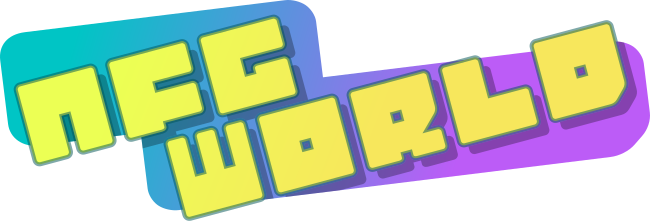


NFG
Mar 25 2015